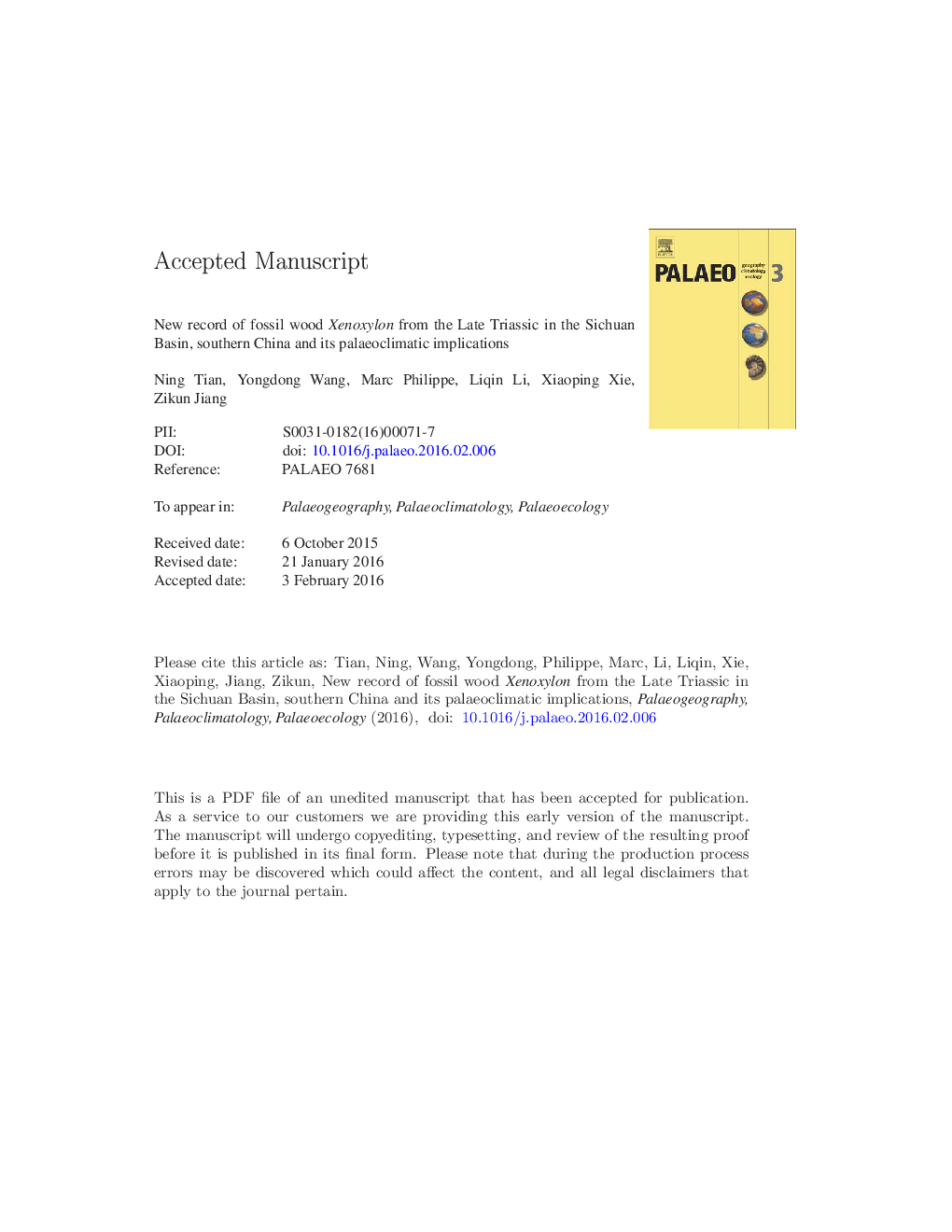| Article ID | Journal | Published Year | Pages | File Type |
|---|---|---|---|---|
| 5755804 | Palaeogeography, Palaeoclimatology, Palaeoecology | 2016 | 44 Pages |
Abstract
Fossil wood is one of the significant proxies for terrestrial paleoclimate and paleogeographical reconstruction in Earth history. Abundant and diversified Mesozoic fossil woods are well recorded in China; however, Triassic fossil wood is very scarce. Here, we report a new fossil wood from the Late Triassic Xujiahe Formation (Norian to Rhaetian) in Guangyuan of northern Sichuan Basin, southwestern China. The fossil wood material consists of two well-preserved specimens yielding secondary xylem with distinct growth rings. Bordered pits on the radial tracheid walls are mostly contiguous, biseriate alternate, locally uniseriate and strongly flattened. Cross-fields show a large window-like pore. This anatomy is typical for the important fossil wood morphogenus Xenoxylon Gothan, and, based on a novel combination of radial and cross-field pitting type and ray height, a new species, Xenoxylon guangyuanense sp. nov. is recognized. The finding of this new fossil wood taxon contributes to a better understanding of the yet poorly documented Xenoxylon early radiation during the Late Triassic, as well as of the origin of X. meisteri group, a peculiar endemic group which diversified in Far-East Asia from the Triassic to the Early Cretaceous. Xenoxylon is a paleobiogeographically significant genus, being bound to cooler and/or wetter climates of Northern Hemisphere throughout its Late Triassic-Late Cretaceous range. The occurrence of Xenoxylon in the Sichuan Basin of southern China may indicate a short-term cooling event, sandwiched within a period during which warm and wet climate conditions largely prevailed over lower latitude regions of the Northern Hemisphere. Such a cooling event in the Sichuan Basin which was located at a low paleolatitude on the eastern rim of Tethys may be in accordance in time with the temperature decline event in Norian-Rhaetian boundary uncovered by oxygen isotope (δ18O) record in Italy of the western rim of Tethys.
Related Topics
Physical Sciences and Engineering
Earth and Planetary Sciences
Earth-Surface Processes
Authors
Ning Tian, Yongdong Wang, Marc Philippe, Liqin Li, Xiaoping Xie, Zikun Jiang,
